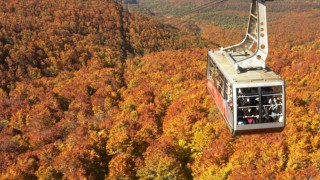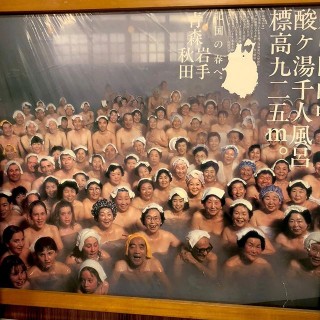Loading
Search
▼ Hakkoda Mountains
- Category:Mountain

GAIJIN POT
Powder snow and the bath of 1,000 bathers
Some of Japan’s best autumn scenery, traditional onsen and snowscapes grace the Hakkoda mountains in Aomori, Japan’s second-most-northern prefecture.
The Hakkoda mountain range includes 20 mountains and is the cultural border between the Western Tsugaru area, home to Hirosaki Castle, and the Eastern Nanbu area, home to Hachinohe City, while Aomori City is located directly north. This area in central Aomori is a hotspot for natural beauty and tourists flock here because of it.
Climbing Hokkoda
Mount Odake, at about 1,585 meters, is the tallest and most popular mountain to climb in the range. The other mountains share the same main hiking trail, but the jaw-dropping views of the Pacific Ocean, Sea of Japan and Mount Iwaki towering over the Tsugaru plains from atop Ohdake are unrivaled.
Hiking Mount Odake takes about five hours. It’s definitely suitable for beginning climbers, but you can also skip the hike and head up the mountain on the Hakkoda Ropeway cable car. After the 10-minute-long cable car ride, you can do some hiking around the mountaintop and then head back down from Sancho Park station.
Hot spring haven
The Hakkoda Mountains are actually a volcanic mountain range. This means that the area is filled with onsen (hot springs). All of these onsens use spring water heated by the volcanos for their baths. After a long day’s hike, it’s a great way to unwind and take in nature.
Sukayu Onsen is a well-known spot for an amazing onsen experience on the eastern side of the Hokkoda mountains. The onsen town — one of the snowiest inhabited places on earth — has a reputation for its Senninburo (bath of 1,000 bathers), even though only about 150 people can safely fit in. Still, that’s a pretty huge indoor bath. The traditional onsen is made completely of beech wood and illuminated by lanterns. Both men and women share the main bath, but there is also Tamanoyu, which has baths separated by gender.
Skiing and snow
The Hakkoda mountains are known for heavy snowfall and skiing. In 2013, the Japanese Meteorology Agency recorded a record of over 5.6 meters (18.3 feet) of snow. Despite all the snow, you can still get around and explore.
Hakkoda’s slopes are notoriously empty and always freshly powdered. Similar to Yamagata Prefecture’s Zao Onsen, Hakkoda has “Snow Monsters” which are a natural phenomenon where trees are hugged by snow resembling big snow creatures. For an up-close experience, ride the Hakkoda Ropeway to up Sancho station to take a winter stroll or ski around them.
Things To Know
Best times to go
Hiking in late September and all of October when Hakkoda shows its gorgeous autumnal colors that is the best way to experience the Hakkodas. Skiing is best from late December through late March when the snow is at its tallest.
Hokkoda Ropeway Fees and Hours
Roundtrip Tickets: Adult is ¥1,850; child is ¥870. Hours: 9 a.m. to (last departure) 4:20 p.m. from March to beginning of Nov. and 3:40 p.m. from Mid-Nov. to end of Feb.
Sukayu Onsen
Address: 50 Sukayusawa Arakawayama Kokuyurin Arakawa-minami Aomori-shi Aomori-ken 030-0111 | Fees: One-Day Onsen is ¥600, but you must select either Senninburo or Tamanoyu. Fee for onsen and rest area is ¥1,000. | Hours: Senninburo (co-ed): 7 a.m. ~5:30 p.m.(8-9 a.m. is female-only); Tamanoyu from 7 a.m. to 5 p.m.
How To Get There
Address
Hakkōda Mountains, Aomori, Aomori Prefecture, Japan
By train
Take the Hayabusa bullet train from Ueno station to Shin Aomori station (roughly ¥16,000 and takes 3 hours). Transfer from Shin-Aomori Station to Aomori station on the JR Ou line. The Hakkodas are only serviced by buses from Aomori Station.
By bus
Bus is the only form of public transportation to the Hakkodas. Buses leave from Aomori station to Mount Hakkoda take about 55 minutes to the Hakkoda Ropeway and about 70 minutes to Suyaku Onsen.- December 20, 2018
- Comment (2)
- Trackback(0)
Comment(s) Write comment
purchase amoxicillin sale - https://combamoxi.com/ amoxil over the counter
-
cx6i6
- July 7, 2025





This is the type of enter I find helpful. https://proisotrepl.com/product/propranolol/
Conniereugs Web Site- July 31, 2025